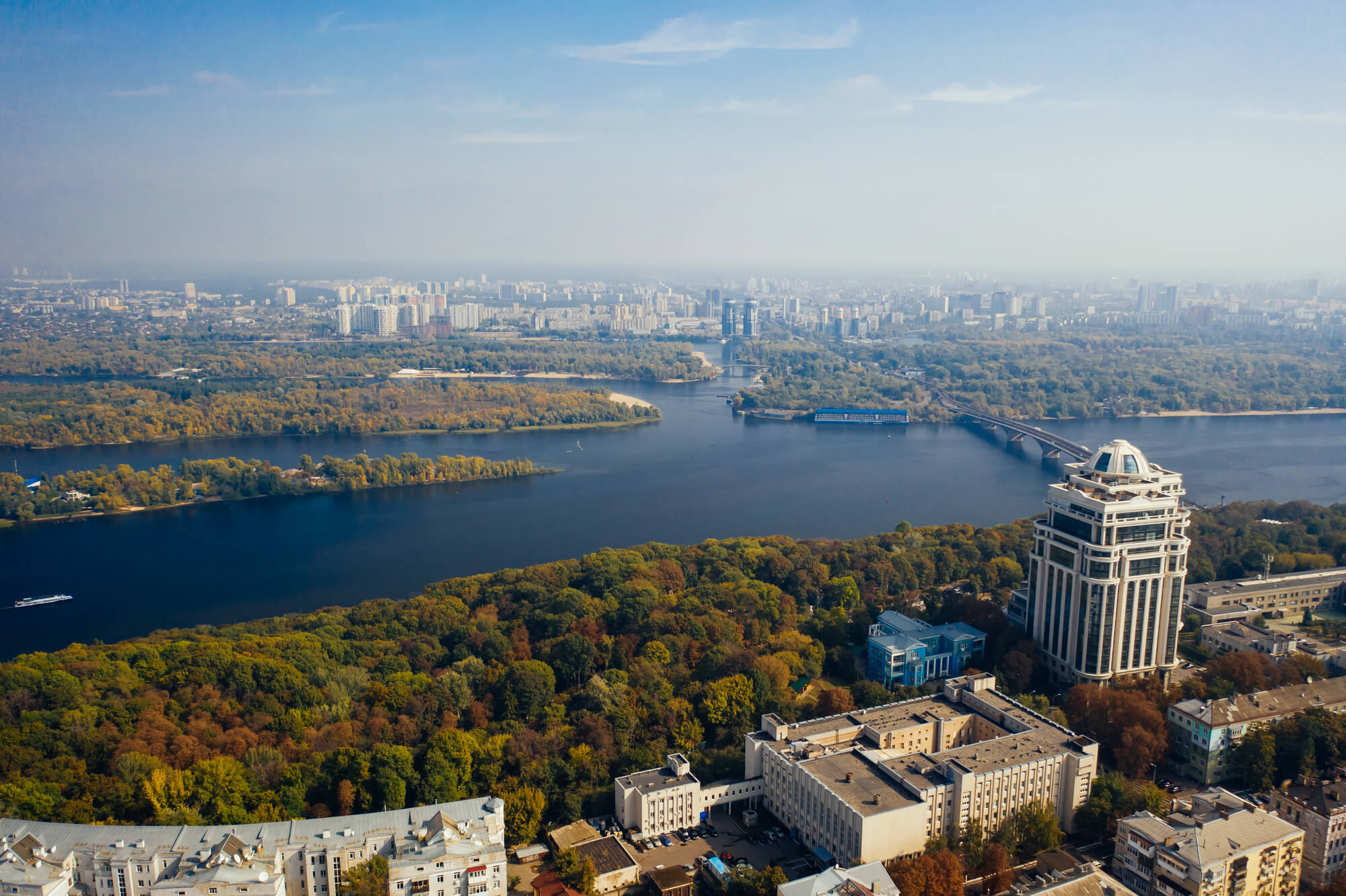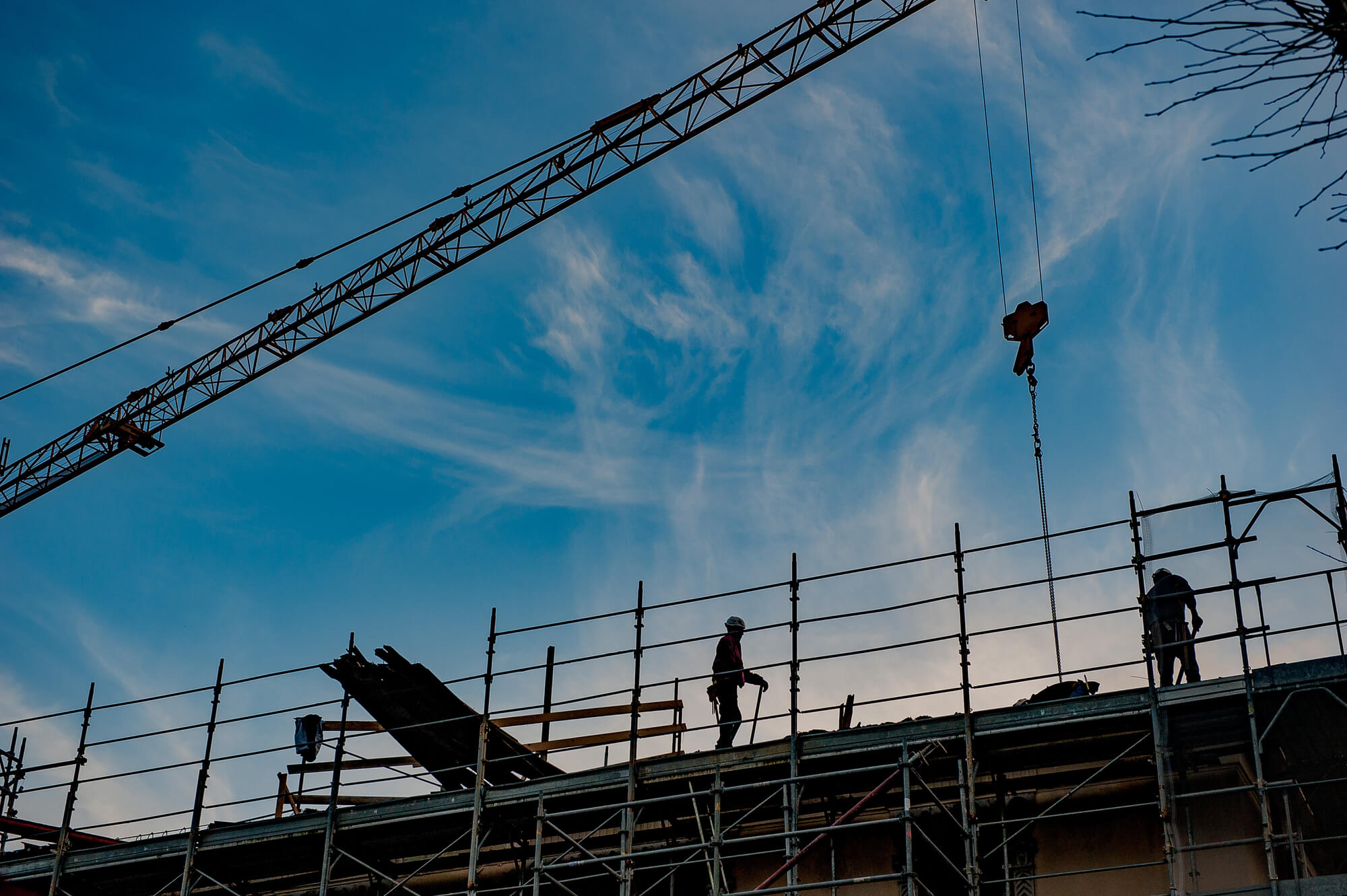The guest of this “Reconstruction” podcast episode is Denys Bashlyk, Deputy Minister of Agrarian Policy and Food of Ukraine for Digital Development, Digital Transformation, and Digitalization.
We talked with him about cotton cultivation, support for farmers in frontline regions, humanitarian and “self-led” demining efforts, the role of women in the industry, and the EU’s stance on Ukraine’s agricultural sector.
On the impact of war on the agricultural sector
In 2021, Ukraine harvested a record crop of nearly 100 million tons of grain. This year, projections indicate a yield of 72-74 million tons despite 19% of arable land being occupied. According to a World Bank report, the direct impact of the war on Ukraine’s agricultural sector amounts to USD 10.3 billion, with almost 60% of these losses due to destroyed agricultural machinery (the conversation took place in August — ed.). Nonetheless, Ukraine currently produces three times more agricultural products than it consumes domestically (which is why it is crucial to support and expand export corridors — ed.).
On exports
In 2022, when the Black Sea was fully blocked, exports were indeed problematic. Today, thanks to the Armed Forces of Ukraine, we can sell our products almost as we did before the full-scale invasion.
Over the past 11 months, we have exported 42 million tons of agricultural products (as of August 2024 — ed.). Monthly figures sometimes exceed pre-war levels. Currently, 85% of grain exports are transported by sea.
Export costs are heavily impacted by logistics expenses. Last year, with global grain prices not being particularly favorable, producers sometimes found themselves selling at a loss just to clear stock. This was primarily due to the high costs of road and rail transportation, which “ate up” a large portion of revenue. For instance, with grain priced around 120 euros per ton, transport expenses alone reached 80 to 90 euros just to get it to the port. Thankfully, due to the efforts of our Armed Forces, these costs have now decreased, allowing us to restore our export operations.
The key points of the podcast were compiled by Maksym Yovenko, a Reform Index project assistant
On the consequences of opening the land market
Although the land market only began operating in July 2021, and just six months later, the full-scale war began, dampening demand for land, the market continues to develop. In 2024, as planned, the market was opened to legal entities, with foreigners having no access to it.
In 2021, 20,000 transactions were made on the market, 24,000 in 2022, and 45,000 in 2023! Additionally, prices have risen by 35% compared to 2022, as, surprisingly, demand on the market exceeds supply.
Interestingly, most transactions are conducted in frontline areas. To me, this is a sign that people believe in victory. It’s a risky asset indeed, but entrepreneurs continue to invest, buy land, and produce agricultural products specifically in these regions.
Ukrainians tend to sell property or land at the most critical moment. We understand that in frontline areas, people sell land because they have nothing left. Now, imagine if we had a moratorium today—I can’t imagine how some villages would survive. Most people who buy land continue to work it; they cultivate it and hire local villagers to help, allowing the settlement to function even amidst the war.
On landmine contamination
According to official statistics, 2.2 million hectares of land remain potentially mined in territories under Ukrainian control. This is the area we can survey for explosive hazards. On occupied territory, approximately another 2.9 million hectares are mined.
Why “potentially mined”? In global practice, the results of preliminary surveys often differ greatly from actual contamination. Of 100% of the land surveyed, only about 10-12% turn out to be truly mined. The remaining 88-90% can be returned to use and cultivation after undergoing specific procedures.
There are three types of demining: military, humanitarian, and “spontaneous.” Military demining is conducted by the Armed Forces closer to the frontline. Humanitarian demining is carried out by professional demining operators (currently 42 in Ukraine). Most work with international projects and conduct demining funded by donors. Others operate commercially and collaborate with the state, for instance, under a compensation program for humanitarian demining costs initiated by the Ministry of Economy and the Ministry of Agrarian Policy. Humanitarian demining is conducted at least 20 kilometers from the frontline and the Russian border, as it’s technically impossible to carry out under shelling.
Sometimes, farmers conduct demining on their own without waiting for external help. They use improvised machines, attaching protective gear to tractors and sending them into the fields to check for explosive devices. However, this approach is not always safe.
The border with Russia is effectively a fortified zone. We understand the challenging situation that farmers in border areas face, which is why support programs are primarily focused on subsidizing farms to develop production where farmers heroically continue their work.
On livestock farming and support for frontline farmers
We understand that all farmers need support. However, the situation remains most challenging in de-occupied and frontline areas. Therefore, farmers in these regions typically receive twice the subsidies compared to those in safer areas. This increased support is also due to many transporters refusing to collect goods not only near the frontline but also close to the Russian border.
Additionally, we have a support program for small livestock farms with up to 100 cows. For the second year in a row, the state provides UAH 7,000-8,000 per cow, which the owner can use at their discretion (for example, to buy feed, build a shelter, or relocate).
On mobilization, the labor market, and women in agriculture
While the state strives to address the workforce crisis, including through retraining programs, the agricultural sector is not waiting for its help, adapting independently amid wartime challenges. Many companies, large and small, have found their own resources to launch retraining programs for women and young specialists. If it was once rare to see a woman operating a combine, today it’s a common sight, with female combine operators working across all regions.
On its part, the Ministry of Agrarian Policy advocates for reserving a certain number of agricultural workers, acknowledging the need to keep the economy running. While it’s not feasible to reserve all personnel fully, we are working to retain the critical number of workers permitted by current law. Notably, the Ministry of Agrarian Policy was likely the first to implement an electronic system for reserving those eligible for military service.
On border blockades and EU accession
Decisions in the EU are always made by consensus. We understand that the border blockades in neighboring countries were primarily political and, frankly, election-driven. There was almost no economic basis for them, as we transported these goods in transit, with little remaining in Europe.
How much this could become an issue in the future depends on the terms we agree upon for EU accession. Although legislative harmonization is typically required, there is mutual understanding between us and our partners that Ukraine is an atypical country for the European agricultural sector, operating under a different model.
It’s worth recalling that German farmers protested Poland’s accession to the EU, saying, “Now our market will be flooded with Polish products.” However, Poland is now an EU member, and I am confident that a consensus will be found for us as well.
On harmonizing agricultural regulations with the EU
The agrarian sector involves a substantial amount of work: 40% of all legislation that needs to be harmonized with EU standards (about 27,000 regulatory acts) relates specifically to agriculture.
We’ve made significant progress in certain areas—such as phytosanitary and veterinary regulations—but rural development is lagging behind.
In some areas, we’ve even outpaced Europe, such as with the creation of the State Agrarian Register. In Europe, this is merely an informational resource where farmers can provide details about themselves (land area, location, crops grown, etc.). In our case, the Register has become a tool for interaction between farmers and the state, enabling them to access government services through it. We refer to it internally as “AgroDiia.”
However, we still face numerous institutional steps, such as establishing a payment agency dedicated solely to agricultural subsidies, aligning statistical collection with European standards, and implementing continuous satellite monitoring of land.
There are many tasks, and we are working on them, in some cases even more swiftly than certain European countries did before their EU accession. Given current conditions, we simply have no other choice.
On climate change and the future of the agricultural sector
Climate change is one of the factors driving shifts in approaches within the industry. For instance, it necessitates developing and cultivating new crop varieties and seeds that are resilient to climate change.
The question of investment also arises. Southern regions are experiencing more frequent droughts, making it essential to invest in irrigation systems. In central Ukraine, rising average temperatures mean selecting different fertilizers and seeds. This means the sector will undoubtedly undergo transformation. While some costs may increase, others may decrease over time.
In any case, climate change is a long-term issue. How extensively and quickly the sector transforms is not a matter of three or even five years. Significant changes won’t happen next year, but gradually, new approaches will be implemented.
On the prospects of growing hemp
With the passing of Law 7457, everyone is focusing exclusively on the cultivation of medical cannabis, as it was previously entirely prohibited. However, this legislative change has also resulted in the deregulation of industrial hemp cultivation.
Previously, engaging in this sector required obtaining a license and being under constant supervision by law enforcement agencies. Now, the process is purely declarative: a farmer must declare the amount of hemp being cultivated, its location, variety, and so on. Inspections may occur, but there’s no longer a need to undergo a bureaucratic procedure that previously took six months to a year.
Today, industrial hemp is used in a wide range of products, including fertilizers, light industry, and dietary supplements. This plant is resilient to climate change and challenging weather conditions, making it highly profitable.
The price per ton of raw material (industrial hemp fiber) reaches UAH 100,000, and a ton of seed material costs UAH 70,000-100,000, making production quite lucrative. Additionally, it’s a zero-waste process: the roots are used for fertilizers, and the flowers for other products, such as shampoos or oils.
Cultivating medical cannabis is a highly complex technological process. It takes place in controlled indoor environments using hydroponics (from the Ancient Greek words for “water” and “work,” a method of growing plants without soil in nutrient solutions – ed.) and other labor-intensive technologies. Therefore, it is probably more closely related to the pharmaceutical sector than to agriculture.
In any case, both industrial and medical cannabis are emerging industries in the country and are rapidly developing. In 2022, 1,000 hectares were officially sown with industrial cannabis. In 2023, this increased to 3,000 hectares, with a forecast of 8,000–10,000 hectares for 2024–2025. Today, even large agricultural holdings are beginning to cultivate industrial hemp, which is encouraging.
On cotton production
We have a unique situation, as Ukraine has significant potential for cotton cultivation. The southern regions, which currently have lower moisture levels, provide an ideal environment for this crop. The state responded promptly by passing a special law that allowed cotton to be grown with minimal capital investment and taxation.
This year, there are already industrial cotton plantings. Why did no one pay attention to this before? There wasn’t such a demand, which, unfortunately, is now huge.
I believe that industrial hemp and cotton are excellent choices for those looking to earn more and are open to working in a somewhat unconventional format.
To execute an artillery shot, several components are essential: a shell, a fuse, a casing, and a propellant charge, the latter imparting the initial velocity to the shell.
Cotton is the primary material used to produce nitrocellulose, which forms the bulk of this propellant charge (alternatives like wood and industrial hemp are less effective).
According to rough estimates, approximately three kilograms of raw cotton are needed to propel a single 155mm shell from an M777 howitzer. While this may not seem much, it becomes substantial when considering Ukraine’s immense demand for ammunition. Data from the Royal United Services Institute (RUSI) indicates that by the end of last year, Ukraine’s Defense Forces were firing around 2,000 shells daily. During the peak of the spring-summer 2023 counteroffensive, this number rose to 7,000 shells per day.
Photo: depositphotos.com
Attention
The authors do not work for, consult to, own shares in or receive funding from any company or organization that would benefit from this article, and have no relevant affiliations




